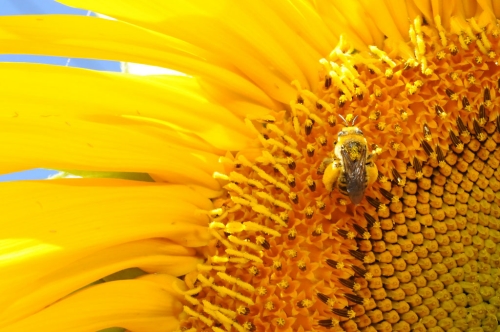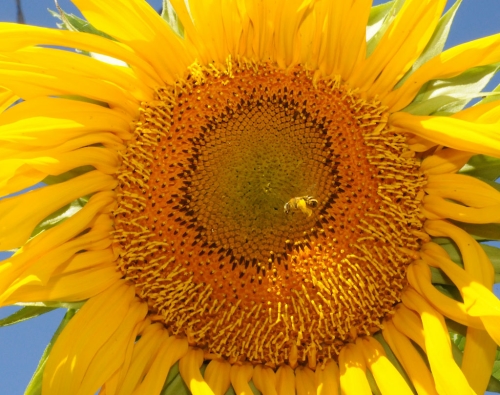- Author: Kathy Keatley Garvey
As a child, Dennis Price loved to watch the honey bees. “I could sit and watch them all day,” he said.
He still does. Love the honey bees, that is.
And he never tires of watching them.
If you attended the California State Fair on Sunday, Aug. 17 or Saturday, Aug. 23, you probably saw the enthusiastic Davis resident, now a beekeeper, in the honeybee booth in the California Foodstyle building. He and his partner Karen Flores were handing out honey samples and answering questions about bees, especially about the bee observation hive where visitors could watch the queen bee, worker bees and drones.
“About one-fourth of them were afraid of the bees, but about one-half of them were as fascinated with bees as I am,” Price said.
Dennis Price is a new beekeeper. Since April. So far, his six hives have produced 81 pounds of honey. The samples he served were absolutely delicious. Liquid gold.
Price is a graduate of UC Davis, but not in entomology. “I used to play racquetball with Larry Godfrey (Extension entomologist at UC Davis), though,” he said.<
Price is a 1989 graduate of UC Davis (chemistry and toxicology) and now works for ESA Biosciences, a company based in Chelmsford, Mass. He's the Western regional account manager, traveling from a route from Seattle to Hawaii, but mostly throughout California.
And in his “spare” time, he keeps bees.
“Bees are so underappreciated and so ignored and they work so hard for us,” Price said.
Above his head in the California Beekeepers Association booth was a sign that read:
- The average honey bee makes just 1/2 teaspoon of honey during her lifetime
- Honey bees fly about 55,000 miles just to make one pound of honey. That's equal to 1.5 times around the world.
- One third of your diet is derived from insect-pollinated plants, and 80 percent of that is done by honey bees.
It used to be that newborn pigs (such as those below) hogged the attention of fairgoers at the California State Fair. They still do, but make way for the bees.
The bees are buzzing around the sunflowers in the garden section and they're making honey in the California Foodstyle Building.
And if you're like me, you'll go to the fair just to see the bees.
You have until Sept. 1 to check them out.
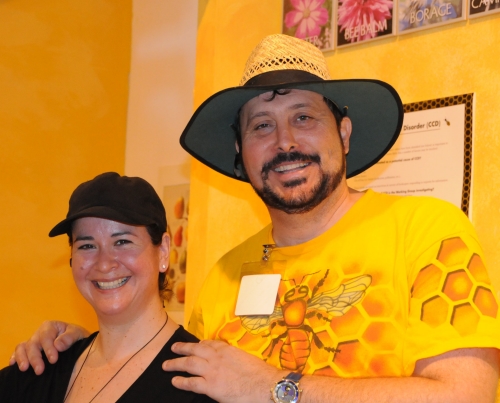

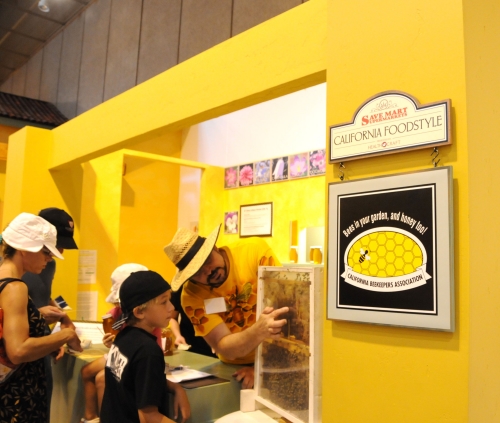

- Author: Kathy Keatley Garvey
Friday lite.
That's what it was.
But it was more than that, too.
Every year, Bruce Hammock, distinguished professor of entomology at UC Davis, wages a water balloon battle for faculty, researchers, graduate students, staff, family and friends.
It takes place on the lawn, north side of Briggs Hall, near his basement lab and offices. We like to kid around that he's located on the “garden level” of Briggs. When Hammock hosts Bruce's Big Balloon Battle at Briggs, it becomes the “water level.”
This year (Friday, Aug. 15) they filled 2500 water balloons and then threw them at one another. Every year when the water balloons are all gone, they empty the buckets—which really makes for some nice photos. I'm glad Bruce Hammock can be so accommodating!
“Nobody can beat Bruce Hammock at water balloons,” said former administrative assistant Jeanette Martin, who returned for the big balloon battle.
The Hammock lab works hard and plays hard.
Bruce Dupree Hammock just won the 2008 UC Davis Distinguished Teaching Award for Graduate and Professional Teaching; he was nominated for his "dedication to his students, his interdisciplinary thrust, and his scientific and professional career guidance."
“This award is one of the most prestigious granted on the UC Davis campus and recognizes consistent outstanding teaching and commitment to student success,” said Krishnan Nambiar, chair of the Academic Senate Distinguished Teaching Award Committee in a letter to Hammock nominator Michael Denison, professor of environmental toxicology.
Chemical ecologist Walter Leal, professor of entomology at UC Davis, described Hammock as an excellent teacher and mentor. “I can unequivocally tell you that teaching is Dr. Hammock's passion. He considers teaching the most important role of his university career...He motivates, encourages and inspires, molding a whole new generation of scientists who are discovering ways to benefit humankind.”
Hammock is a member of the National Academy of Sciences and holds a joint appointment in Cancer Research with the UC Davis Medical Center. He directs the National Institute of Environmental Health Sciences (NIEHS) Superfund Program on the UC Davis campus, as well as the National Institutes of Health (NIH) Training Program in Biotechnology, and the NIEHS Combined Analytical Laboratory.
In the last five years Hammock has hosted more than 40 postdoctoral fellows or senior scientists. He has helped train future entomologists, biochemists, engineers, chemists and biologists.
You could say he also trains them to be water warriors.
Make that water warriors, extraordinaire.
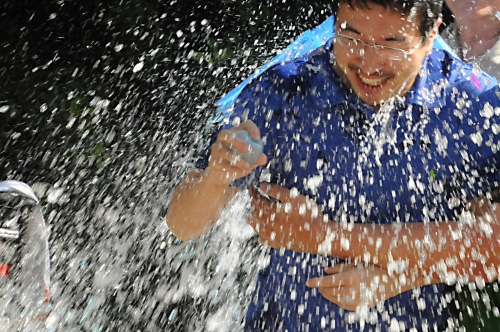
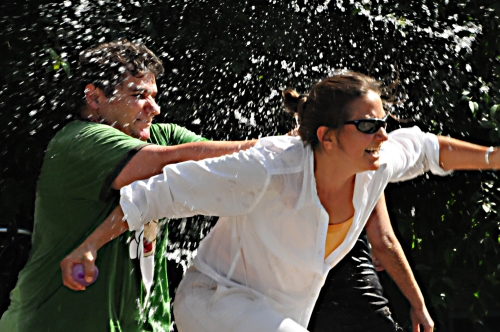


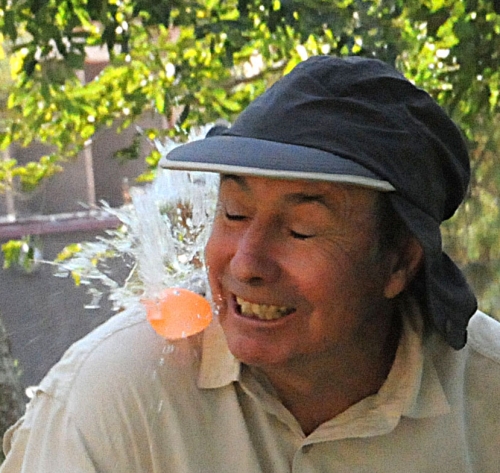
- Author: Kathy Keatley Garvey
Beauty isn't skin deep. It's wing deep.
The Anise Swallowtail butterfly dazzles you with its yellow stripes and blue dots. If it were a painting, it would be a Michelangelo. If it were music, it would be Vivaldi's "Spring." If it were a car, it would be a sleek Lamborghini.
But there it was, a bit of beauty in the otherwise-drab Berkeley marina parking lot. So, I did what all insect lovers do--I photographed it. (See photo below)
Arthur Shapiro, professor of evolution and ecology at UC Davis--and as brilliant as the butterflies he studies--knew exactly what it was. After all, he published his first paper on butterflies in 1962 at age 16.
“Papilio zelicaon, female,” he said.
Just like that.
Shapiro is the author of the newly published “Field Guide to Butterflies of the San Francisco Bay Area and Sacramento Valley Regions,” illustrated by Tim Manolis. In the book, published by the University of California Press, Shapiro discusses and identifies more than 130 butterfly species.
The book is as awesome as his Web site, his own butterfly world. His Web site spans more than three decades of research and observations.
Glad you asked.
When you were in school, you may have reared it in your classroom. It's easy to rear, Shapiro said, but don't provoke it. The caterpillar has “an eversible scent gland (the osmeterium) behind the head. It's yellow or orange and shaped like the letter 'Y' and if the beast is provoked, it releases a mist of butyric acid--rancid butter smell--which will hang in the air many minutes.”
The caterpillar can be a pest in cultivated citrus, but a minor pest.
The Anise Swallowtail is found in most of the western states. Its main hosts are members of the carrot family, Apiaceae. It also feeds on the rue family, Rutacease.
The carrot family includes anise, fennel, dill, celery, parsley, parsnips (I hate parsnips—I'm glad something likes them!) and Queen Anne's lace. The Anise Swallowtail even eats the extremely poisonous water hemlock (Cicuta) and poison hemlock (Conium) “without ill effects,” said Shapiro. “When Socrates drinks, everybody drinks,” he quipped.
This little ol' butterfly is also a famous “hilltopper,” Shapiro said. “In rugged topography, males and virgin females assemble on rocky unforested hilltops to mate--it's a butterfly 'singles bar.' The females do not return once mated, but the males come back day after day looking for action."
If you want to know more about butterflies, then Art Shapiro's “Field Guide” is a must-have for your collection.
And if you find an Anise Swallowtail in the Berkeley marina parking lot, it's mine.
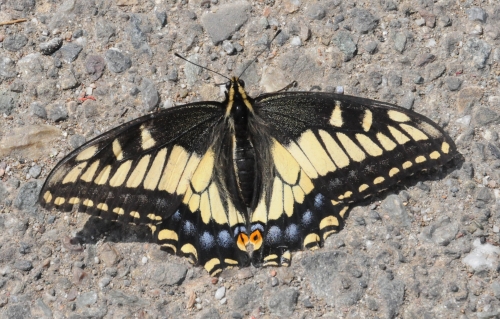
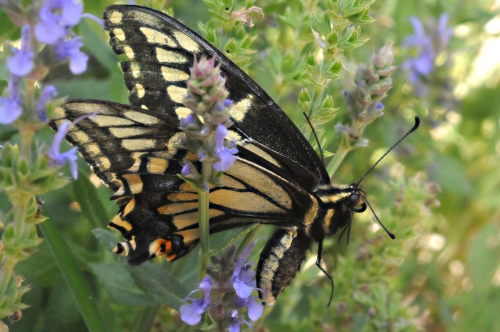
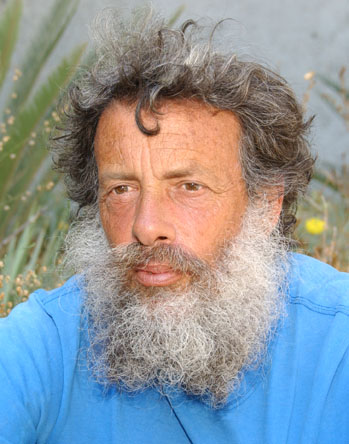
- Author: Kathy Keatley Garvey
Hillary Thomas' biological control research on a leaf-eating beetle that targets saltcedar has scored a bullseye.
Thomas, a doctoral candidate in entomology at UC Davis, has received a $15,000 Robert and Peggy van den Bosch Memorial Scholarship to support her research.
Saltcedar or tamarix (Tamarix spp.) is a major pest that threatens waterways. In the western United States alone, the plant impacts several million acres of prime riparian land.
Thomas researches Diorhabda elongata, a saltcedar leaf beetle native to Central Asia and a natural enemy of the pest.
She won the award for her project, “Impact of Host-Plant Preferences on Establishment and Efficacy of Diorhabda elongata (Coleoptera: Chrysomelidae), a Biological Control Agent of Saltcedars.” She studies with major professor Frank Zalom, an integrated pest management specialist.
“Hillary is an outstanding young scientist who is committed to the implementation of biological control,” said Zalom. “Her dissertation research on host plant acceptance by the beetles introduced for control of invasive saltcedar is not only useful for that system but will lead to better understanding of the importance of post-release evolution in biological control agent establishment. She is highly motivated."
"The beetle has shown great potential to control the weed in some release areas," said Thomas, who collaborates with the Exotic and Invasive Weeds Unit of the U.S. Department of Agriculture/Agricultural Research Service. "It causes defoliation to the extent that it appears there will be a population-level effect on tamarix stands.”
Thomas' work initially focused on improving insect establishment success in the Cache Creek watershed, near Rumsey, Yolo County, where Tamarix parviflora grows. Today she compares the host plant preferences of two populations: the field population beetles and a source lab colony.
“It seems there might be an increase in host plant acceptability of Tamarix parviflora by the field population,” Thomas said. “I am repeating both field and laboratory experiments at the moment to determine whether there is substantial evidence to support this.”
Saltcedar, first imported to the United States from the Middle East in the 1880s for erosion control and as an ornamental, is extremely aggressive and invasive. As a shrub or small tree, it forms dense thickets, displacing native plants and animals. Its long tap roots suck in massive amounts of water. It also drops its salt-infused foliage on the surface, inhibiting other plant growth.
A single saltcedar can produce as many as 600,000 seeds annually, according to weed specialist Joseph DiTomaso of the UC Davis Department of Plant Sciences. Chemical, mechanical and cultural control techniques are effective, but expensive and temporary.
Three other UC Davis doctoral candidates shared in the Robert and Peggy van den Bosch scholarships.
Amanda Hodson, who studies with major professor Edwin Lewis (he holds a joint appointment in nematology and entomology) received $10,000 to continue her research on “Ecological Influence of Entomopathogenic Nematodes in Pistachio Orchards.”
Yao Hua Law, of entomologist Jay Rosenheim's lab, received $5000 to support his work on "Multiple Predators Improve Biocontrol: Niche Complementarity and Cannibalism.” He also received a $1115 van den Bosch travel award to attend the Ecological Society of America annual meeting in Milwaukee, Wisc., to present his work on predation.
Andrew Sutherland, of entomologist Michael Parrella's lab, received a $1500 van den Bosch travel award for his “Manual Transmission of Powdery Mildew Fungi Mediated by Activity of an Obligate Mycophagous Beetle (Coleoptera: Coccinellidae).” He will attend the Brazilian Society of Entomology conference, set Aug. 24-29. .
The van den Bosch scholarship program provides a total of $60,000 to $80,000 annually for work related to biological control, said coordinators Kent Daane and Nicholas Mills, co-directors of the Center for Biological Control, UC Berkeley. Eligible to apply are doctoral candidates from UC Davis, UC Berkeley and UC Riverside. Typically, the winners receive $15,000, $10,000 or $5,000. Selection is by a panel of biocontrol faculty representing the three schools.
In addition, Daane and Mills annually present travel awards totalling $15,000 to $20,000. The maximum amount is $1500 per student.
Others receiving scholarships were UC Berkeley students Rebecca Chaplin-Kramer (major professor: Claire Kremen, also a UC Davis Department of Entomology affiliate), Mel Stravrinides (major professor: Nicholas Mills); and Eleanor Blitzer (major professor: Stephen Welter). Receiving travel funds: Mel Stravrinides and Eleanor Blitzer, UC Berkeley; and Jason Mottern and Jennifer Henke, UC Riverside.
Robert van den Bosch (1922-1978) served as a researcher, teacher, and an administrator in the Division of Biological Control and the Department of Entomological Sciences, UC Berkeley, from 1963 until his death. A native of Martinez, Calif., he was a lifelong advocate of biological control. His colleagues said he searched tirelessly for natural enemies of agricultural pests, an effort that resulted in the importation and establishment of 17 natural enemy species.
With the recent death of his wife, Peggy, more funds (at her request) were added to the van den Bosch awards program.
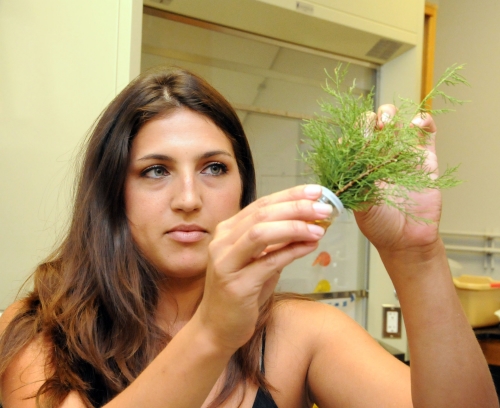


- Author: Kathy Keatley Garvey
If she were boarding an airline, she'd be charged double for baggage.
But she didn't and she wasn't.
She's a pollen-packed sunflower bee enjoying our sunflower. Not a honey bee but a sunflower bee. A native bee.
A Svastra obliqua expurgata (Cockerell), as UC Davis native pollinator researcher RobbinThorp said.
“ I have seen them nesting in gardens in Davis--including at one of the dorms on campus--and nesting in a dirt roadway on Joyce Island (Solano County),” said Thorp, emeritus professor of entomology at UC Davis. He's also seen the sunflower bees visiting native plants in a Sacramento cemetery.
“The males,” Thorp said, “spend much time cruising searching for females. The males have long antennae and thus are called ‘long-horn' bees. The males also have greenish eyes, and bright yellow markings on the lower face.”
Both males and females are larger than honey bees and fly more rapidly when foraging, Thorp said. “They are among the native bees that interact with honey bees on the male rows of hybrid sunflower fields, disturbing the honey bees and causing them to fly out of the male rows into the female rows, thus increasing the pollination efficiency of honey bees as shown in the research by Sarah Greenleaf and Claire Kremen.”
Kremen, an affiliate of the UC Davis Department of Entomology and a regular at the Harry H. Laidlaw Jr. Honey Bee Research Facility on the UC Davis campus, is a conservation biologist at UC Berkeley and the recipient of a MacArthur genius fellowship.
Thorp said Svastra females have dense brushes of hairs on their hind legs and transport pollen dry in these brushes (scopae). Honey bees carry pollen moist on concave hair-fringed pollen baskets (corbiculae).
I wonder what writer Gertrude Stein (1874-1946), known for such prose as “a rose is a rose is a rose” and “there is no there there,” would have said about bees.
Perhaps “a bee is a bee is a bee?”
Or “a sunflower is a sunflower is a sunflower?”
It isn't and it isn't.
